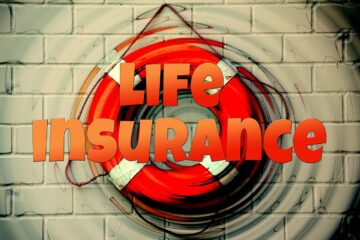Life Insurance riders are a really simple part of insurance (usually life insurance) that most people don’t understand or simply have never heard of. Don’t let your insurance broker (or insurance salesman) speak down to you and act like they are more intelligent than you are by offering insurance riders to you to go alongside your policy. So let’s go over what insurance riders are, how they can benefit you, and the drawbacks of insurance riders.
What are Insurance Riders?
Insurance riders are basically add-on insurance coverage or an add-on feature that you can purchase to go alongside your policy. There are several different types of insurance riders (we’ll get to them in a moment). And some of them are more beneficial than others.
It is important to know that insurance riders ALL come at a cost. No rider is free. For each rider that you get, your premium will go up. So if you add on every rider that is available, your premium will be really high.
Also, it is important to remember that you do not have to purchase any riders if you don’t want to.
While there are several different riders that you can purchase that will be dependent on your specific situation, there are a few that are really common to see.
Common Types of Insurance Riders
(1) Accidental Death
The accidental death rider is one of the most common. An accidental death rider will pay out a multiple of your insurance amount if you die of an accident and not a disease, natural causes, etc. The most common multiple for the accidental death rider is 2x.
So for example, if you have a life insurance policy that has a $250,000 death benefit with an accidental death rider attached to it and you die in a car accident, your beneficiary will be paid $500,000.
(2) Return of Premium
Another common insurance rider is the return of premium. This rider will give you back everything that you paid into the policy over the time that you had it if you are still alive at the expiration of the policy.
For example, Jack has a 20 year life insurance policy that he pays $50/month for that has a return of premium rider attached. At the end of the 20 years the policy will cease to exist. But because he had the return of premium rider he will get back all of his premiums at the end of the 20 years. So he will get a check for $12,000.
(3) Waiver of Premium
A waiver of premium rider is also somewhat common. A waiver of premium rider will let you keep the insurance in place but not pay the premiums if you are disabled or incapacitated.
It is important to note that different insurance companies define “disabled” and “incapacitated” differently. You will have to check your specific policy to know what disabilities are covered for this rider to kick in.
(4) Child Rider
A child rider is a rider that can be used to cover your child if your child were to pass away.
What this typically looks like is Mom or Dad get a policy on themselves for $250,000 and get a child rider for $15,000 or so.
Typically child riders are much smaller than the death benefit for the parents. They are typically used to simply pay for funeral, burial, and final expenses of the child.
(5) Accelerated Death Benefit
An accelerated death benefit rider will vary based on the state that the insured is in. But an accelerated death benefit rider lets the insured get a portion of their life insurance proceeds PRIOR to dying if they have been diagnosed with a terminal illness.
Similar to the waiver of premium rider, this rider is dependent on the specific state and insurance company on what the term “terminal illness” means.
Generally, for the insured to get a portion of their death benefit paid out before they pass away, they have to be given a life expectancy of two years or less.
(6) Long-Term Care
A long-term care rider is also a very common one. This rider will let the insured access a portion of the death benefit before they die in order to pay for long-term care (nursing home or hospice care).
The amount and way that someone can use their insurance policy to pay for their long-term care needs will be very dependent on the insurance policy itself as well as how the rider is written.
Final Thoughts
The concept of insurance riders is not really hard to understand. The problem is trying to sift through each rider and decide which one is best for your situation. Certainly, not all the riders that are available to purchase will be necessary. And a lot of times, no riders will be just fine as well.
Just make sure to understand your needs and what riders (if any) you will find value from.
And also, remember that for no insurance rider is free. You will have to pay for each insurance rider that you get. 🙂
I am here to help you understand your finances and grow your Money Muscle!
Please let me know what other subjects that you would like for me to explain!
You can do this!
Until next time!



0 Comments